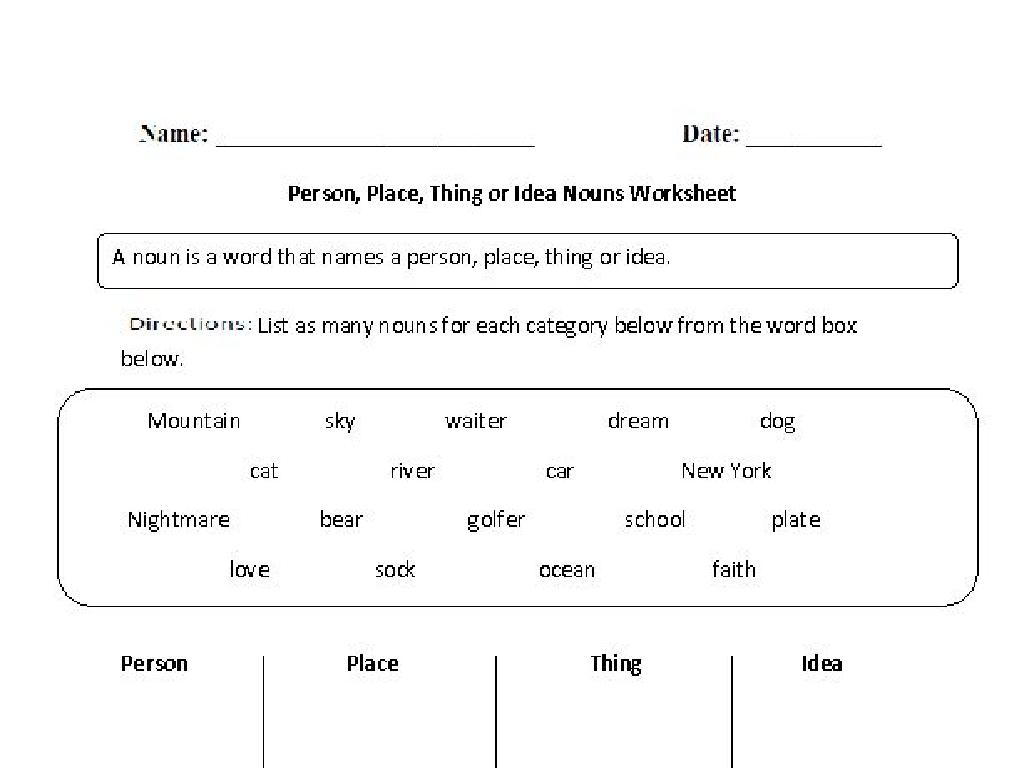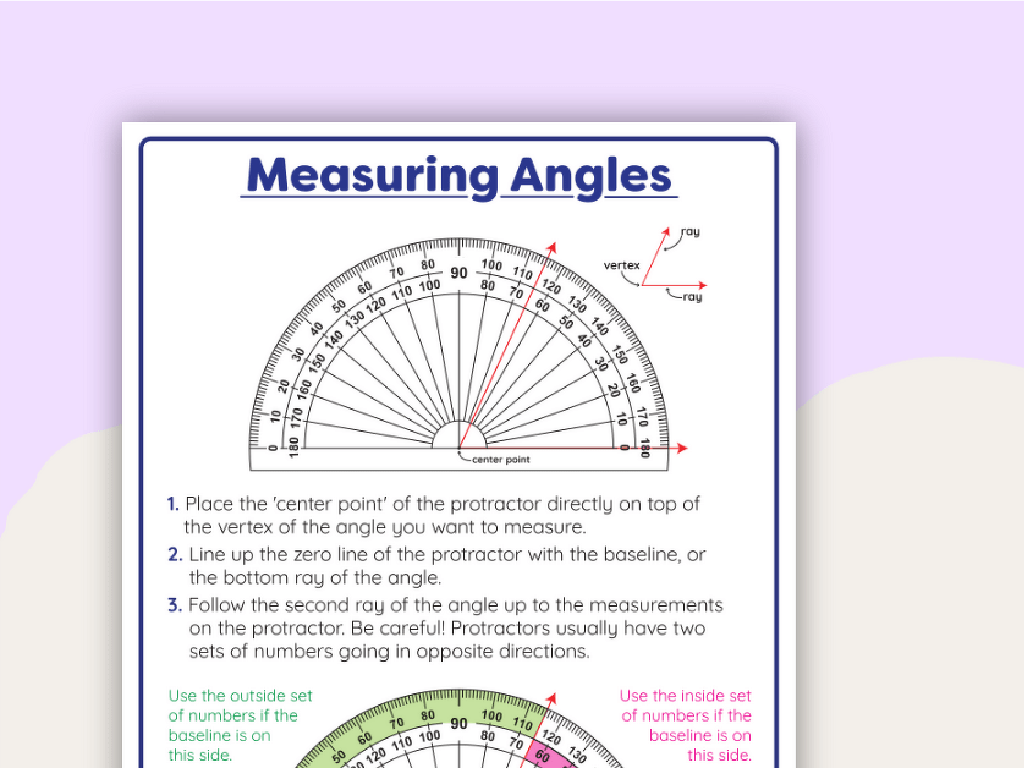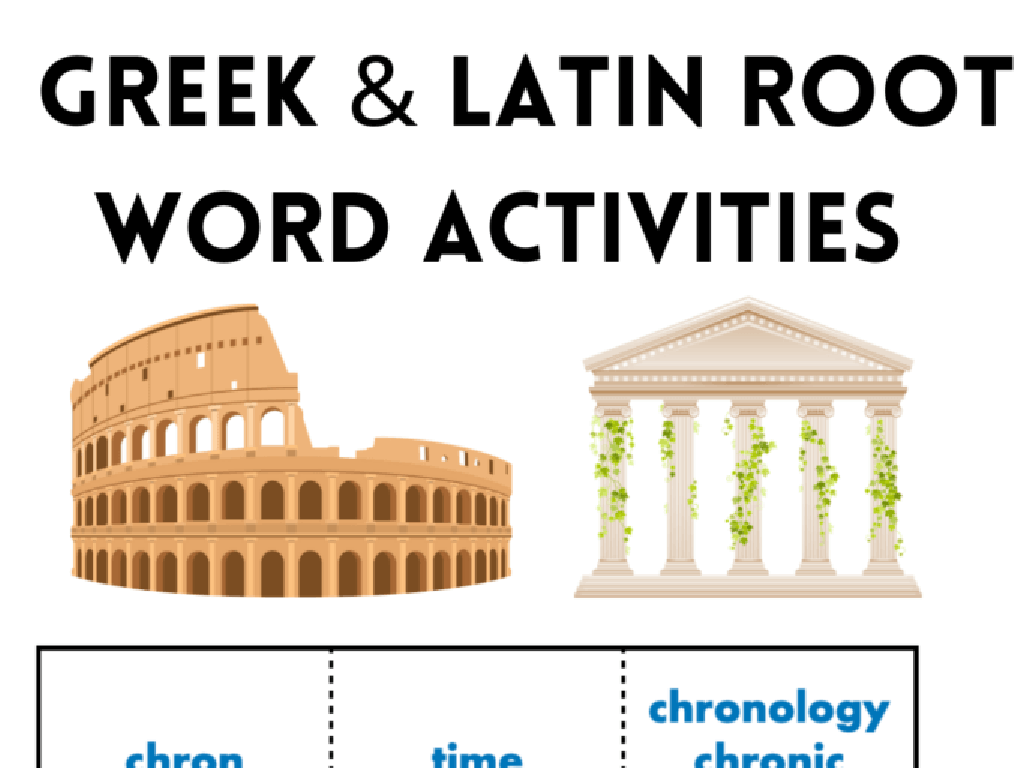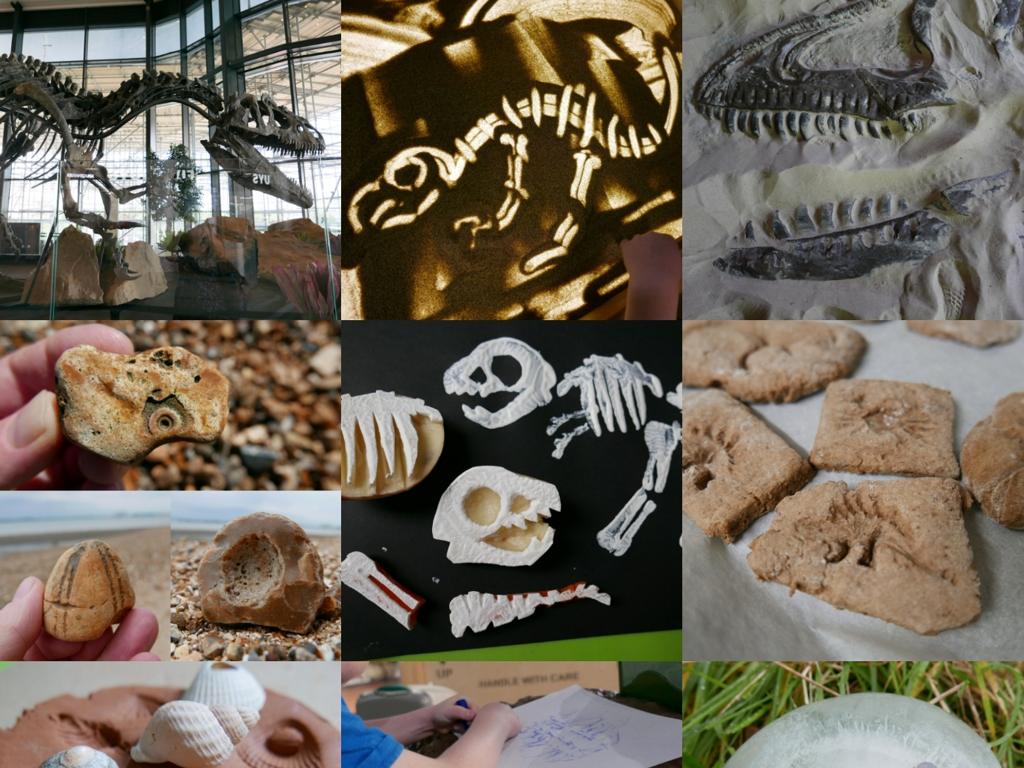Convert Between Percents, Fractions, And Decimals
Subject: Math
Grade: Seventh grade
Topic: Percents
Please LOG IN to download the presentation. Access is available to registered users only.
View More Content
Introduction to Percents
– Understanding Percents
– A percent represents a part out of 100
– Relation to fractions & decimals
– Percents, fractions, and decimals are different ways to show the same value
– Real-life percent applications
– Discounts, interest rates, and statistics often use percents
– Converting between forms
– Use division or multiplication to convert between percents, fractions, and decimals
|
This slide introduces students to the concept of percents and their relationship with fractions and decimals. Begin by explaining that ‘percent’ means ‘per hundred’ and is a way to express a number as a part of 100. Show how a percent can be converted to a fraction by using the denominator of 100, and to a decimal by dividing by 100. Provide real-life examples where percents are commonly used, such as in calculating sales tax, discounts during shopping, or interest rates in banking. Teach the students the methods to convert between these forms, such as converting a fraction to a decimal by division and then to a percent by multiplying by 100. Encourage students to practice with examples and to understand the practical applications of these conversions in everyday life.
Understanding Percents
– Percent means ‘per hundred’
– Visualizing 1% on a 100-square grid
– 1 shaded square out of 100 represents 1%
– Percents in daily life
– Discounts, data analysis, report cards
– Converting percents to fractions and decimals
– Example: 50% = 50/100 = 0.50
|
Begin with the basic definition of percent as a part out of a hundred. Use a visual aid of a 100-square grid to illustrate what 1% looks like, which can help students grasp the concept visually. Discuss how percents are used in everyday life, such as in calculating sales discounts, understanding statistics, or determining grades. Then, demonstrate how to convert percents into fractions and decimals, using simple examples that students can easily follow. Emphasize the importance of understanding these conversions as they are widely applicable in various real-world scenarios.
Converting Percents to Fractions
– Understand percent to fraction
– A percent represents a part out of 100
– Simplify fractions to lowest terms
– Divide the numerator by the denominator and reduce
– Example: Convert 50% to a fraction
– 50% equals 50/100, which simplifies to 1/2
– Practice with different percents
|
This slide introduces the concept of converting percents to fractions, a key skill in understanding and working with percentages. Start by explaining that ‘percent’ means ‘out of 100’, making it easier to convert to a fraction by using 100 as the denominator. Emphasize the importance of simplifying fractions to their lowest terms to make them easier to work with. Use 50% as a clear example, showing that it is equivalent to 50/100, which simplifies to 1/2. Encourage students to practice this skill by converting various percents to fractions and simplifying them. Provide additional examples and practice problems to reinforce the concept.
Converting Percents to Decimals
– Understand percent to decimal
– Move the decimal point two places to the left
– Learn decimal place value
– Each place represents a power of ten
– Example: Convert 75% to decimal
– 75% becomes 0.75
– Practice with different percents
|
This slide introduces the concept of converting percents to decimals, which is a fundamental skill in understanding percentages. Emphasize the process of moving the decimal point two places to the left to convert a percent into a decimal. Reinforce the concept of place value in decimals, where each place to the right of the decimal represents a decreasing power of ten (tenths, hundredths, thousandths, etc.). Use 75% as a clear example, showing that it is equivalent to 0.75 in decimal form. Encourage students to practice this conversion with a variety of percentages to solidify their understanding. Provide additional examples and practice problems in the notes for the teacher to use during the lesson.
Converting Fractions to Percents
– Understand fraction to percent steps
– Use division to convert fractions
– Divide the numerator by the denominator
– Multiply by 100 to find percent
– After division, multiply the result by 100
– Example: Convert 3/4 to percent
– 3/4 divided by 4 equals 0.75, then 0.75 times 100 equals 75%
|
To convert a fraction to a percent, students should first divide the numerator (top number) by the denominator (bottom number) to get a decimal. Then, they multiply the decimal by 100 to convert it to a percent. For example, to convert 3/4 to a percent, divide 3 by 4 to get 0.75. Then, multiply 0.75 by 100 to get 75%, which is the percentage equivalent of the fraction 3/4. Encourage students to practice with different fractions and reinforce the concept that multiplying by 100 is the same as moving the decimal point two places to the right.
Converting Decimals to Percents
– Multiply decimal by 100
– Shift decimal point right two places
– Moving the decimal two places to the right changes 0.2 to 20
– Example: Convert 0.2 to a percent
– 0.2 becomes 20% after shifting the decimal and adding a percent sign
– Practice with different decimals
– Try converting 0.75, 0.08, and 0.5 to percents
|
This slide is focused on teaching students the process of converting decimals to percents. Start by explaining that multiplying by 100 is equivalent to shifting the decimal point two places to the right. Emphasize that this movement changes the value from a decimal to a percentage. Use 0.2 as a clear example, showing that it becomes 20% after the conversion. Encourage students to practice with a variety of decimal values to solidify their understanding. Provide additional examples and common mistakes to watch out for, such as forgetting to add the percent sign after conversion.
Converting Percents, Fractions, and Decimals
– Apply conversion skills
– Collaborative problem-solving
– Work in pairs or groups to solve problems
– Explain your reasoning
– Discuss the steps you took to find the answer
– Share solutions with the class
|
This slide is designed to engage students in active practice of converting between percents, fractions, and decimals. Start by presenting a few problems that the class can work through together, then allow students to work in pairs or small groups to solve additional problems. Encourage them to verbalize their thought process as this helps solidify their understanding and enables them to learn from each other. As they share their solutions, ask them to explain the reasoning behind their answers. This will not only help them understand the concepts better but also develop their communication skills. Possible activities could include creating a conversion chart, solving word problems, or playing a matching game with different representations of the same number.
Class Activity: Percent Conversion Relay
– Group activity setup
– Receive cards with fractions, decimals, and percents
– Each group gets a mix of cards to work with
– Match fractions and decimals to percents
– Find the equivalent percent for given fractions and decimals
– Collaborate and discuss within groups
– Share strategies and help each other understand conversions
|
This activity is designed to encourage teamwork and reinforce the concept of converting between fractions, decimals, and percents. Divide the class into small groups and provide each group with a set of cards. Each card should have either a fraction, a decimal, or a percent. The task for each group is to match each fraction and decimal with the correct percent. This will require students to apply their knowledge of conversion between these forms. As they work, circulate around the room to offer guidance and ensure that each group is engaged. After the activity, bring the class together for a discussion to share different strategies used during the relay. This will help students learn from each other and solidify their understanding of the concept.
Converting Percents: Recap & Homework
– Review of percent conversions
– Mastery of conversions is crucial
– Understanding conversions is essential for real-life applications like shopping discounts.
– Homework: Conversion worksheet
– Worksheet includes problems on converting between percents, fractions, and decimals.
– Practice makes perfect
|
This slide aims to summarize the key points from the lesson on converting between percents, fractions, and decimals. Emphasize the importance of mastering these skills for practical situations, such as calculating discounts and tax in shopping scenarios. For homework, students are assigned a worksheet to reinforce their understanding and practice the conversion methods taught in class. The worksheet should contain a variety of problems that require students to convert numbers between the three forms. Encourage students to practice regularly, as proficiency in these conversions is a fundamental math skill that will be beneficial throughout their academic and everyday lives.






